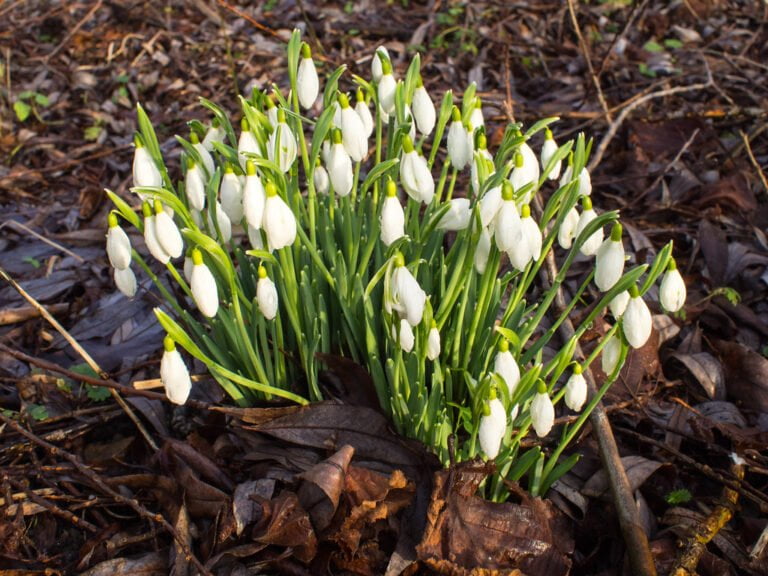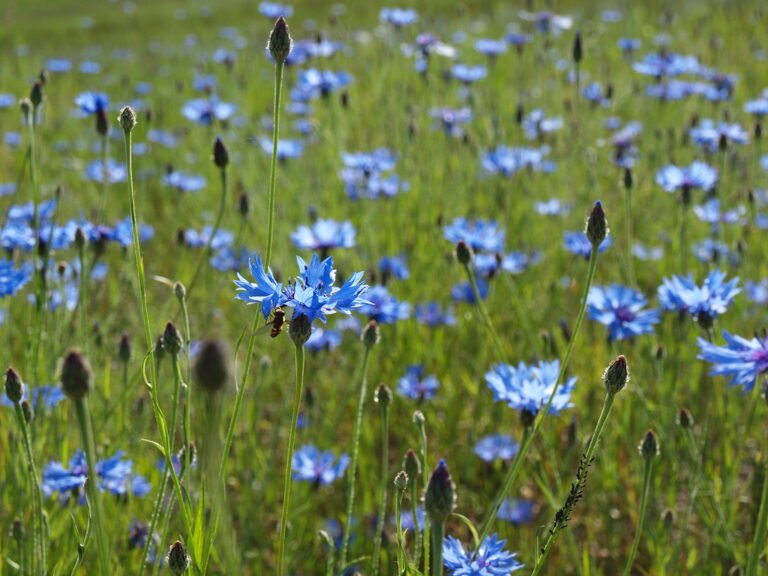Exploring the Beauty of Yellow Flower Shrubs
When exploring the beauty of yellow flower shrubs, you’ll discover they bloom in various seasons, serving as vibrant guides for pollinators like bees and butterflies. Low maintenance varieties such as Potentilla and St. John’s Wort thrive in different soil types and light conditions, offering stunning blooms and fragrances. The key to their best growth lies in full sun exposure, well-draining soil, and proper spacing for air circulation. Pruning after flowering, deep watering, and fertilizing in spring are essential for vibrant blooms. These shrubs not only improve the visual appeal of outdoor spaces but also attract beneficial pollinators, creating a harmonious garden ecosystem.
Characteristics of Yellow Flower Shrubs
Blooming in various seasons, yellow flower shrubs exhibit distinctive characteristics that make them attractive to both gardeners and pollinators. These shrubs, such as Forsythia and Witch Hazel, showcase their vibrant yellow flowers at different times of the year, brightening up gardens in early spring and late fall to early winter. Their striking hue serves as a guide for pollinators like bees and butterflies, assisting in the crucial process of pollination.
Yellow flowering shrubs like Potentilla and St. John’s Wort are not only visually appealing but also low maintenance, making them a practical choice for gardeners. Their easy-to-grow nature allows for a hassle-free gardening experience, perfect for both beginners and experienced enthusiasts. Additionally, some varieties, such as Golden Elder and Kerria Japonica, demonstrate an impressive adaptability to various soil types, thriving in different environments.
One of the standout features of yellow flowering shrubs is their ability to flourish in diverse light conditions. Whether placed in full sun or partial shade, these shrubs continue to add a bright burst of color to any garden landscape. Their versatility in light requirements makes them a flexible choice for gardeners looking to incorporate vibrant yellow tones into their outdoor spaces.
Ideal Growing Conditions for Yellow Shrubs
Yellow flowering shrubs, including popular varieties like Forsythia and Witch Hazel, require specific growing conditions to thrive and produce their vibrant blooms. To guarantee the prime growth of yellow flowers, it is vital to plant them in areas that receive full sun. Adequate sunlight promotes photosynthesis, which is vital for blooming. Additionally, well-draining soil is paramount for yellow shrubs to prevent issues like root rot and waterlogging, which can be harmful to their health.
Spacing between yellow flowering shrubs is also a critical factor to take into account. Proper spacing allows for good air circulation, reducing the risk of diseases and promoting healthy growth. Overcrowding can lead to competition for resources, stunting the plants’ development. While yellow shrubs generally thrive in full sun, some varieties can tolerate partial shade. However, it’s important to note that they may not bloom as profusely in shadier conditions.
Testing the soil pH is recommended when cultivating yellow flower shrubs. Depending on the results, amending the soil with organic matter can create ideal growing conditions. This practice ensures that the plants have access to essential nutrients for healthy growth and vibrant blooms. By following these ideal growing conditions, gardeners can enjoy the beauty of yellow flowering shrubs in their landscape.
Popular Varieties of Yellow Flowering Shrubs
What are the characteristics of the popular varieties of yellow flowering shrubs that make them stand out in garden landscapes? Yellow flowering shrubs add vibrancy and warmth to garden settings, attracting pollinators and providing visual interest. Some popular varieties include Forsythia, Witch Hazel, Potentilla, Kalm St. John’s Wort, and Bush Honeysuckle.
Forsythia is known for its early bloom, showcasing vibrant yellow flowers that signal the arrival of spring. These flowers not only enrich the landscape but also attract bees and butterflies, contributing to the garden’s biodiversity. Witch Hazel offers a unique feature with its bright winter flowers in shades of yellow, copper, or red, adding color to the winter garden. Additionally, its stunning fall foliage further elevates its appeal.
Potentilla is another popular choice, boasting deep golden yellow flowers that bees find irresistible. This shrub thrives in full sun and well-draining soil, making it a low-maintenance option for gardeners. Kalm St. John’s Wort stands out with its blue-green foliage and sunny yellow flowers, which not only attract bees but also tolerate drought conditions, making it a resilient choice for various climates.
Design Tips for Incorporating Yellow Shrubs
When planning your garden design, consider integrating yellow shrubs strategically to enrich the overall aesthetic appeal and ecological diversity of your outdoor space. Yellow shrubs can serve as focal points or accents, creating a vibrant contrast against green foliage and other flower colors. To start the conversation on incorporating yellow shrubs, here are some design tips:
- Placement: Position yellow shrubs in areas that receive adequate sunlight to promote healthy growth and maximize the impact of their vibrant blooms. Consider placing them near walkways, entrances, or windows to enjoy their beauty up close.
- Complementary Planting: Pair yellow shrubs with plants that have contrasting foliage colors or textures to create visual interest. For example, combining yellow shrubs with purple or blue flowers can result in a striking color combination.
- Layering: Utilize yellow shrubs of varying heights to create depth and dimension in your garden. Taller shrubs can serve as backdrops for smaller flowering plants, while medium-sized shrubs can fill in the middle layer.
- Grouping: Planting several yellow shrubs together in clusters can make a bold statement and enrich the impact of their color. Grouping them also makes maintenance tasks like watering and pruning more efficient.
Seasonal Care and Maintenance Tips
When caring for yellow flowering shrubs, proper pruning techniques are vital for healthy growth and maintaining shape. It is essential to water deeply but infrequently to encourage deep root growth and overall plant health. Additionally, fertilizing in the spring and mulching around the base of the shrubs can help promote vibrant blooms and protect the roots from moisture loss.
Pruning for Healthy Growth
Prune yellow blooming shrubs promptly after their flowering period to stimulate fresh growth and maintain their desired shape. Start by removing any dead or damaged branches to improve overall plant health and appearance. Thinning out crowded areas within the shrub is crucial to boost airflow and reduce the risk of diseases. Additionally, cutting back excessively long branches will promote a more compact and bushy growth habit. Remember to use clean and sharp pruning tools to make precise cuts, which will help minimize stress on the plant. Proper pruning not only fosters healthy growth but also guarantees that your yellow flower shrubs remain vibrant and visually appealing throughout the season.
Watering and Fertilizing
To sustain the health and vibrancy of yellow flower shrubs, it is important to provide proper watering and fertilization as part of seasonal care and maintenance. Yellow flowering shrubs thrive when watered deeply but infrequently, allowing for deep root growth and preventing waterlogging. During the spring, fertilize these shrubs to promote healthy blooms and overall growth. It is vital to monitor them regularly for pests and diseases, addressing any issues promptly. Mulching around the base of yellow flowering shrubs helps retain moisture and protects their roots. Pruning after flowering is also critical for encouraging new growth and maintaining the desired shape. Ensure these shrubs receive sufficient sunlight, ranging from full sun to part shade, for excellent health and beautiful blooms.
Yellow Flower Shrubs in Landscaping Trends
I’ve noticed a growing trend in landscaping that incorporates yellow flower shrubs for their striking visual impact. These shrubs not only brighten outdoor spaces but also play an important role in attracting essential pollinators like bees and butterflies. Designing with yellow shrubs offers a versatile way to create focal points or add interest to diverse garden borders.
Landscaping With Yellow Flowers
In modern landscaping trends, integrating yellow flower shrubs strategically boosts the visual appeal and ecological diversity of outdoor spaces. Yellow flower shrubs not only add a vibrant burst of color but also attract beneficial pollinators like bees and butterflies to your garden. Their versatility allows for various uses, serving as focal points, borders, or in mass plantings. When paired with plants sporting purple, blue, or green foliage, they create beautiful contrasts that enrich the overall aesthetic of the landscape. Incorporating these cheerful and welcoming yellow flower shrubs in landscaping designs is a sure way to uplift the atmosphere of any outdoor space, making it a delightful haven for both humans and wildlife alike.
Benefits of Yellow Shrubs
Incorporating yellow flower shrubs into landscaping designs not only enhances visual appeal but also plays an essential role in attracting beneficial pollinators like bees and butterflies to outdoor spaces. Yellow shrubs thrive in bright light conditions, adding a vibrant touch to gardens. Their low maintenance nature and adaptability to various soil types make them a practical choice for landscaping projects. Some yellow shrub varieties not only offer stunning blooms but also emit fragrances, enhancing the sensory experience in the garden. These shrubs serve multiple purposes, acting as focal points, borders, or hedges to provide structure and visual interest. When strategically placed alongside other plants, yellow shrubs create alluring contrasts and combinations, elevating the overall aesthetic of landscaping designs.
Design Ideas for Shrubs
Using a variety of yellow flowering shrubs in landscaping trends can greatly improve the visual appeal and design complexity of outdoor spaces. When incorporating these shrubs into your garden design, consider the following:
- Create Focal Points: Use yellow flowering shrubs as focal points to draw attention and add a vibrant touch to your landscape.
- Contrast with Other Colors: Pair yellow blooms with contrasting colors like purple or blue to create visually appealing arrangements.
- Borders and Hedges: Utilize yellow flowering shrubs as borders or hedges to provide structure and definition to your outdoor space.
- Cluster Planting: Planting yellow shrubs in clusters can create a natural and vibrant look, especially when their leaves turn different shades throughout the seasons.
Attracting Wildlife With Yellow Flower Shrubs
Yellow flower shrubs, such as Forsythia and Potentilla, play a significant role in attracting bees and butterflies to the garden with their vibrant blooms. These shrubs typically grow to around 3-6 feet tall and wide, providing ample space for pollinators to visit. Additionally, yellow-flowering plants like Witch Hazel and St. John’s Wort are recognized to draw in bees and butterflies due to their nectar-rich flowers.
Incorporating shrubs like Golden Elder can further enrich wildlife interest in the garden, as their yellow flowers and berries attract birds. Observing these interactions can bring a sense of harmony to the outdoor space. Furthermore, Yellow Bells shrubs with their bell-shaped flowers are excellent for luring hummingbirds, adding a dynamic element to the garden.
Scotch Broom, with its vivid yellow flowers, serves a dual purpose by not only enticing pollinators like bees but also contributing to soil health by fixing nitrogen. These examples highlight the multifaceted benefits of incorporating yellow flower shrubs into the garden landscape.






